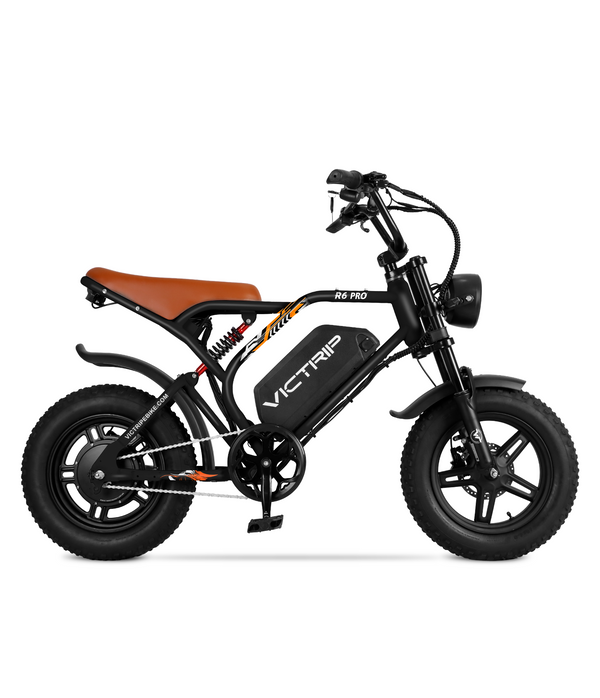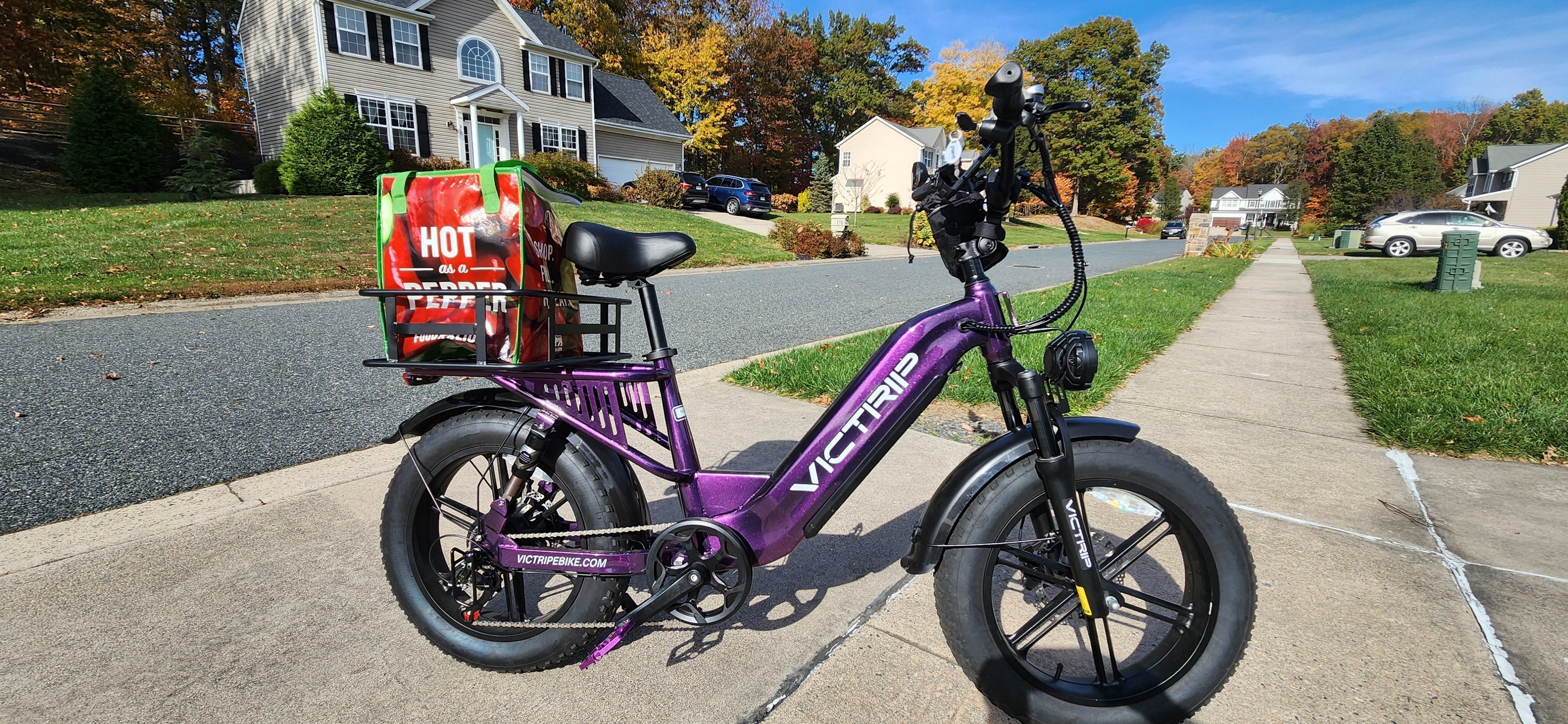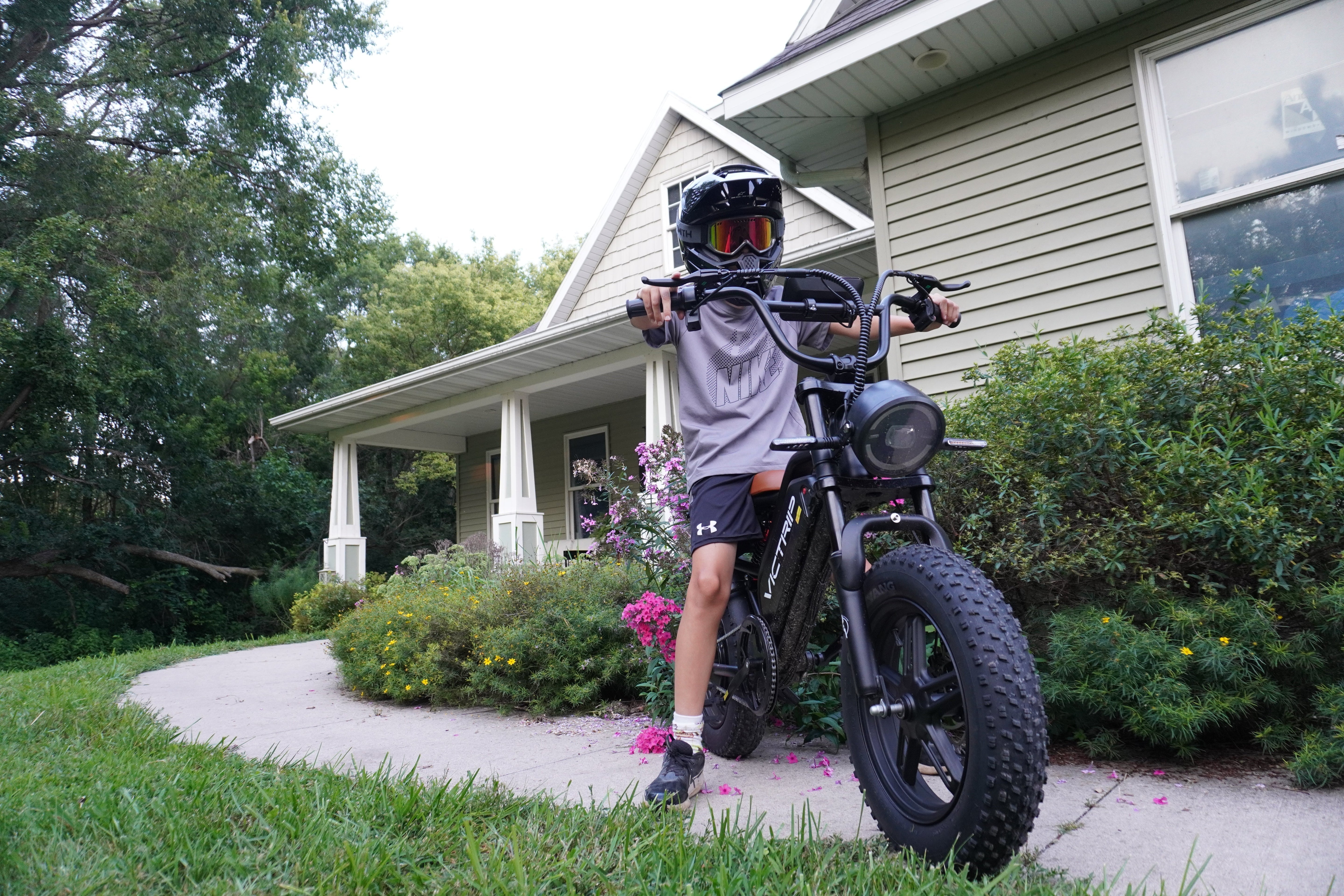
Yes — electric off road bikes can be very beginner-friendly if you choose the right bike, follow a safety-first progression, and learn proper trail etiquette. They take a lot of the grunt work out of climbing and let you focus on skill-building, but they also come with extra weight, higher speeds, and some legal/trail-access considerations you’ll need to respect.
What we mean by "electric off road bikes"
When I say electric off road bikes I mean electric mountain bikes (e-MTBs), trail e-bikes, and similar pedal-assist machines designed for unpaved surfaces. These bikes usually have:
-
A mid-drive or hub motor that assists while pedaling.
-
Suspension suited for trail use (hardtail or full-suspension).
-
Wider tires and stronger brakes compared with city e-bikes.
Electric off road bikes are built to help you ride farther and climb easier, not to replace technique. Think of the motor as a training partner — it amplifies your input so you can practice more and progress faster.
Electric bike classes and trail access (what matters for beginners)
Understanding e-bike classes is critical because they affect where you can legally ride and what behavior’s expected of you on shared trails.
-
Class 1: Pedal-assist only, motor cuts out at 20 mph. Widely accepted on many trails and paths.
-
Class 2: Throttle-assisted (no pedaling required), motor cuts out at 20 mph. Less common on trails; some trail systems restrict them.
-
Class 3: Pedal-assist up to 28 mph. Often treated like bikes on roads but may be restricted on many multi-use trails.
Why this matters for beginners: start with a Class 1 eMTB if you want the broadest trail access and the best chance of fitting trail rules. Always check local land manager rules—state parks, national forests, and local trail groups set their own policies.
Read More: EBike Laws in Europe vs America: A Comparison.
Why electric off road bikes can be easier for beginners
There are several clear ways eMTBs make entry easier:
-
Climbing confidence: The motor delivers steady torque on climbs, so beginners can focus on body position and cadence rather than grinding up hills. This reduces fear and fatigue and helps you practice more.
-
Longer rides = faster skill building: Because you expend less energy getting to the top, you can do more laps or explore further, accelerating learning.
-
Controlled power delivery: Modern systems offer predictable assistance modes (Eco, Trail, Boost) so you can match power to terrain as your skills improve.
-
Accessible for different fitness levels: If you’re coming back from injury, are older, or simply want to minimize sweat, e-bikes open the sport to more people.
In short: an eMTB can lower the physical barriers while you build technical confidence. But lower physical demand doesn’t remove the need for good technique.
Risks and challenges new riders must know
Electric off road bikes make it tempting to ride faster and farther, which introduces specific risks:
-
Weight and handling: E-bikes are heavier (often 10–20+ lbs more), affecting low-speed maneuvering and obstacle recovery. That extra mass matters in rock gardens and when lifting or flipping your bike.
-
Speed and stopping: Assistance can increase speed; stopping distances rise, so powerful brakes and proper modulation are essential. Practice braking with the added mass.
-
Trail etiquette & social friction: Some non-eMTB riders worry e-bikes change trail dynamics. Respect passing rules, announce yourself, and use conservative power near other users.
-
Battery management: Runouts on remote trails can make for long walks with a heavy bike. Learn how to monitor range and carry emergency tools.
-
Regulatory risks: In some places, Class 3 or high-powered bikes are restricted or require registration—check local laws.
Accepting these challenges and learning to manage them is part of becoming a responsible eMTB rider.
How to learn safely: step-by-step progression for beginners
Here’s a beginner-friendly progression that builds skill and confidence without overreaching:
-
Flat ground and balance: Start on gravel or a dirt service road. Practice slow-speed balance, controlled turns, and shifting while in Eco mode. Keep assistance low so you learn bike balance.
-
Gentle climbs and descents: Move to easy singletrack with small roots and rocks. Use Trail mode; practice body position for climbs and controlled descents.
-
Handling obstacles: Introduce small drops and rock rolls at walking speed; learn to unweight the front and use the motor smoothly.
-
Technical climbs: Work on cadence and choosing lines—use higher assist for the final push but aim to pedal steadily.
-
Speed and braking drills: Practice controlled braking from moderate speeds with the extra mass; master modulating rather than jamming the levers.
-
Trail etiquette drills: Practice yielding, announcing, and passing safely—be predictable and conservative near other users.
Take lessons or guided rides early if you can—one or two sessions with an instructor will give focused feedback that speeds progress.
Choosing the right electric off road bike as a beginner
Picking the right bike is the single biggest influence on how friendly the experience will be.
Key variables:
-
Motor type: Mid-drive motors offer better climbing performance and balance. Hub motors are simpler and sometimes cheaper, but mid-drives are generally preferred for trail bikes.
-
Power and torque: Don’t chase the highest torque number if you’re new; predictable power delivery matters more than raw numbers.
-
Battery size: Bigger batteries give range but add weight. For beginners, a middle-ground battery (400–600 Wh) is often best.
-
Suspension: Hardtail (front suspension only) can be lighter and cheaper for many beginners. Full suspension smooths rough trails and builds confidence but costs more.
-
Brakes: Hydraulic disc brakes are a must for reliable stopping with heavier bikes.
-
Fit and geometry: Get a proper frame size and comfortable cockpit — a good fit makes learning easier.
-
Serviceability & support: Choose a brand or local shop with service support; e-bike systems sometimes need software or motor service.
👉 Beginner-friendly recommendation: The VICTRIP R6 off road Ebike is a solid option for new riders. It combines trail-ready suspension, a reliable motor with smooth power delivery, and a battery capacity that balances range with manageable weight. Its geometry is forgiving for beginners, and it’s rugged enough to handle a variety of off-road conditions while remaining accessible for first-time riders.
The VICTRIP R6 Pro is an excellent choice if you want a bit more capability as you grow. With upgraded components and enhanced durability, it provides the same beginner-friendly accessibility while leaving room for more advanced trail riding as your skills progress.
TOP PICK

VICTRIP®R6 Pro 1500W Moped Style EBike
Essential gear and setup for new e-MTB riders
Gear matters as much as the bike:
-
Helmet: At minimum, a good mountain bike helmet; consider a full-face for aggressive trails.
-
Protective pads: Knee pads and gloves reduce injury and boost confidence.
-
Tires & pressure: Go for tubeless-ready tires and run slightly lower pressures for grip—but don't go too low.
-
Tool kit: Multi-tool, spare tube (or tubeless plugs), pump/CO₂, and a chain tool.
-
Hydration & nutrition: Longer rides mean more need for water and snacks because an e-bike encourages exploration.
-
Phone/charger & ID: For emergencies—plus a basic map or trail app.
Set tire pressures and suspension sag as a priority before your first ride; small setup tweaks make a big difference.
Maintenance basics to keep your e-bike safe
Routine care keeps a heavy electronic machine reliable:
-
Keep it clean: Hose off dirt, avoiding direct high-pressure spray on bearings and the motor port. Dry and lube the chain.
-
Battery care: Charge after rides, avoid fully emptying the battery frequently, and store partially charged in winter. Watch manufacturer guidelines.
-
Brake & drivetrain checks: Inspect pads, adjust cables/hydraulics, keep the drivetrain clean and properly lubed.
-
Software & firmware: Some mid-drive systems get firmware updates; check your shop for updates that improve feel and safety.
-
Annual full service: Because e-bikes have electrical systems, an annual check by a qualified tech is wise.
A little maintenance each month prevents big, heavy mishaps on the trail.
Common beginner mistakes and how to avoid them
Avoid these rookie moves:
-
Riding on full boost all the time: You’ll learn less and drain your battery faster. Use low-power modes for practice.
-
Ignoring bike fit: Too tall or short a cockpit hurts confidence; get a shop to set up your fit.
-
Underestimating weight on a recovery: The heavier bike needs different body movements to pop over obstacles. Practice lifts and bunny hops on easy features.
-
Tire pressure mistakes: Too low and you’ll pinch-flat; too high and you’ll slide. Find a happy medium for your weight.
-
Trail etiquette errors: Don’t blast through blind corners; announce yourself when passing. Respect other trail users.
Fix these early and you’ll avoid habits that are hard to break later.
Beginner-friendly trails and how to find them
Start on gravel roads, park service roads, and beginner singletrack. Look for trails rated “easy” or “green” and ask local shops for recommendations. Many trail organizations now list e-bike-friendly routes and rules—check trail websites or local biking clubs. Guided beginner rides are a great way to learn local etiquette and line choices.
Costs: what beginners should budget for
Expect a wide range: entry-level eMTBs start around $1,500–$2,500 (value hardtails), mid-range good beginner full-suspension bikes sit in $3,000–$6,000, and high-end machines climb beyond that. Add protective gear ($150–$600), maintenance (~$100–$300/year), and possible lessons ($50–$150 per session). Renting or demoing first can help avoid a costly mis-buy.
When to get professional instruction or guided rides
Take instruction if:
-
You feel stuck on specific skills (descending, cornering, technical climbs).
-
You want rapid, safe progress with personalized feedback.
-
You plan to ride technical trail systems and want to build confidence quickly.
One or two sessions with a certified coach can pay for themselves by preventing injuries and instilling the right habits early.
Conclusion — should you start on an electric off road bike?
If your aim is to learn fast, ride more often, and enjoy hilltop views without the punishing climb, then yes—electric off road bikes are beginner-friendly when chosen and used thoughtfully. Start with a Class 1 or low-powered trail e-bike, invest in basic protective gear, take a lesson or two, and practice a stepwise progression. Be considerate on trails, keep your battery and bike maintained, and you’ll find an eMTB a welcoming doorway into off-road riding.
FAQs
Are electric off road bikes good for absolute beginners?
Yes. For absolute beginners, a Class 1 eMTB with moderate power, proper fit, and guidance is a very friendly way to learn mountain biking because it reduces the physical barrier to entry while allowing you to learn technique.
Will an e-bike make me a lazy rider?
Not necessarily. If you use Eco or Trail modes and focus on technique, e-bikes can help you practice more laps and thus improve faster. Don’t rely solely on Boost mode if you want to build skill.
Do I need to register my electric off road bike?
Mostly no for typical Class 1/2 e-bikes in many U.S. states, but rules vary—some places require registration for higher-power models or Class 3 bikes. Always check local DMV or land manager rules.
What’s the best first e-bike for trails?
Start with a quality hardtail e-MTB or an entry-level full-suspension bike from a reputable brand; demo multiple bikes and prioritize fit, brakes, and dealer support over max torque numbers.
How do I avoid running out of battery on a trail?
Learn your bike’s real-world range in different assist modes, carry a charger if the route is near civilization, use conservative modes early in rides, and factor in elevation gain (which uses more battery).




Share:
Why Women Prefer Step Through Electric BIke?
Why Women Prefer Step Through Electric BIke?